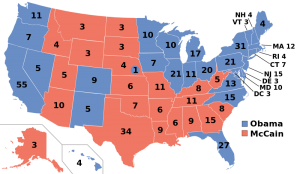Five-hundred thirty-eight. In a democracy with a population over 300 million, only 538 electoral votes will determine the next president of the United States.
Each state has the same number of electors as they have congressional representatives and senators, and the District of Columbia is given three representatives as well. This balance leads to higher influence from larger states like California and Texas.
Logically, this should be fine, as bigger states would yield a higher number of voters anyway, but mathematically, it is inefficient. Theoretically, if a candidate running in this election won only the 11 most populous states by the slimmest of margins, that candidate could potentially attract less than 30 percent of the popular vote. However, he or she would still have the required 270 electoral votes to be elected president.

This doesn’t sound very democratic, as 70 percent of the population would be outraged. But at the same time, it doesn’t sound very realistic either. There is no way a candidate could win the electoral vote, but not the popular vote. However, this controversy has already occurred … three times (as shown in the infographic below).
In 1876, Samuel J. Tilden won the popular vote by over 3 percent, yet Rutherford B. Hayes won by a single electoral vote. A dozen years later, Grover Cleveland lost his re-election campaign to Benjamin Harrison, despite attracting more popular voters. Most recently, in 2000, Al Gore won the popular vote, but a controversy with Florida’s electoral votes gave George W. Bush the state’s whopping 25 electoral votes and the presidency.
As these four sensationalized elections indicated, this country is long overdue for an abolishment of the electoral college, because it is no longer serving the purpose the Founding Fathers were hoping it would.
When the Constitutional Convention formed the Electoral College, it was because the northern and southern United States had major conflicting views, specifically on slavery. A popular vote would give an obvious advantage to the larger states of the south, so an Electoral College was formed to create the balance that the popular vote could not provide.
However, this method seems outdated now. Now, there are large states that support both parties, like New York supporting Democrats and Texas supporting Republicans. And we don’t have a major issue on the table that could lead to a war between the northern and southern states. Thus, the Electoral College is unnecessary in such a populous, conflicting country.
The controversial elections in the 1800’s served as a sign and Bush vs. Gore served as a wake-up call. Our voting system needs change now.
The United States cannot pride itself on democracy if the country’s most important decision may not even recognize the majority’s opinion.







